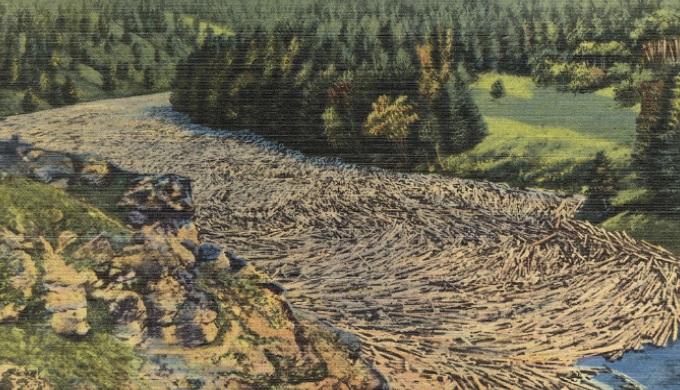Long before the railroads crossed Texas, river travel was king. Steamboats prevailed for a very short time during the early days of Texas, but, sadly, much of that history has been lost just as the steamboats of that era have passed on.
History
Steamboats in Texas History from Austin’s Colony to Today
Stephen F. Austin’s Plan

Photo: Wikimedia Commons
Stephen F. Austin planned to use riverboats from the start. He hoped to use the same ship the Texan colonists sailed to Texas on from New Orleans on the Colorado River, but this plan failed, when the ship, the Lively, missed the Colorado’s mouth and went to the mouth of the Brazos. Austin believed the Lively and its passengers had sunk, and this tale eventually circulated throughout the region, though the Lively passengers were safe. After failing to establish a colony upstream on the Brazos, they left Texas.
The First Boat on Texas Rivers

Photo: Wikimedia Commons
Though Austin knew the importance of river navigation, he failed to put the first transportation boat on a Texas river. That honor goes to Stephen F. Austin’s cousin Henry Austin with his steamboat the Ariel. After operating on the Rio Grande from June 1829 through to August 1830, it moved to navigate the Brazos. Though it ran until December 1830, the ship failed to reach New Orleans and ended up rotting near Harrisburg, near modern-day Houston.
Successful Steamboats on the Brazos River

Photo: Wikimedia Commons
After some poor starts, steamboats did successfully move along the Brazos River. The Yellow Stone, Mustang, Lady Byron, and Cayuga frequently moved goods along the Brazos River, connecting San Felipe to the coast. By 1840, one of the biggest hurdles to Brazos River navigation, the Velasco Bar, was successfully passed by the Constitution.
Obstacles on the Colorado River

Photo: Flickr/Boston Public Library
Steamboats would not be able to successfully move along the Colorado River until 1845. A six-mile-long natural blockade of fallen tree logs blocked the river. Though in 1838, much smaller keelboats operated upstream of this blockade, the logs proved to keep locations upstream on the Colorado from the coast until 1845 when workers cut a channel through the blockade, allowing the Kate Ward to navigate successfully up the Colorado.
End of the Era of Steamboats

Photo: Wikimedia Commons
Though many river towns increased in population and profits from riverboat traffic, this era would not last long after the Civil War. By then, railroads crossed the state, and in 1870, the first railroad from the rest of the United States entered Texas, allowing for interstate commercial activity completely on rails. This would prove the downfall of steamboats in Texas, and now, if you see them, they offer water trips for tourists rather than a practical means of moving cotton harvests from river plantations and farms to port.
References:
https://tshaonline.org/handbook/online/articles/etr02
http://wheretexasbecametexas.org/early-steamboat-transportation/
http://www.forttumbleweed.net/steamboats



